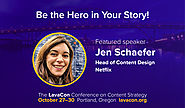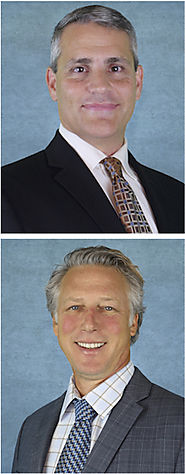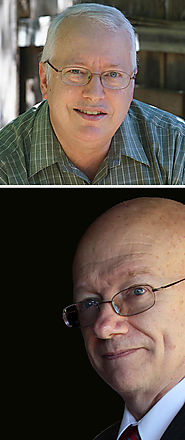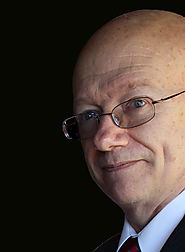-
About
- About Listly
- Community & Support
- Howto
- Chrome Extension
- Bookmarklet
- WordPress Plugin
- Listly Premium
- Privacy
- Terms
- DMCA Copyright
- © 2010-2025 Boomy Labs


 Jack Molisani
Jack Molisani
Listly by Jack Molisani
The next LavaCon Conference on Content Strategy and Technical Communication Management will be in New Orleans, October 21-24, 2018.
Speaker proposals are now posted. Please vote if you are interested in our 2018 conference:
https://list.ly/list/21RP-lavacon-2018-new-orleans-speaker-proposals
Source: http://lavacon.org/2016/dublin/

We are happy to announce that the opening keynote speaker at LavaCon 2019 is Jen Schaefer, the Head of Content Design at Netflix.
Register using the referral code *LISTLY19 * for $100 off conference tuition! https://lavacon.org

Content marketing holds a prominent place in a B2B marketing strategy, but developing a solid B2B content marketing strategy is not enough. To really wow your audience, you also need to consider the experience your content enables.
In this article, we have carefully put together a six-step framework to build and deliver winning B2B content experiences. Let’s jump in!
Step 1: Research Your Audience and Competition
If you haven’t already created a content marketing strategy, it’s the right time to get started. The first step in creating a B2B content marketing strategy is to research your audience and competition.
Develop multiple buyer personas that represent different levels of your target audience. Research their demographics — geographic characteristics, job titles, education, interests, company size, aspirations, type of content they consume and any other traits that would strengthen the buyer persona. Understanding your buyers and their purchase journey will help you deliver better content experiences.
Simultaneously, research your competition as well. Identify the keywords and topics they target, and the content formats and distribution channels they use. Knowing these three elements will help you plan the remaining part of your content marketing strategy.

Doug McBride
Principal Interaction Designer
Precor, Inc
Woodinville, Washington
doug@mcbridemedia.com
Session title:
Searching for the Torch in Your UX Pain Cave
Session description - in brief ( 75 -80 words )
How do you Design an interface where the user takes off their glasses, has sweat in their eyes, and is running 5 miles an hour? When you're in the Pain Cave, you need a different solution to your UX problem.
Session description - in full
In this entertaining and informative 60 minute session I will go into detail with the audience some of the stumbling blocks (traps), discoveries (kindling and torches), and solutions (ladders) encountered in my 20 years of experience working with interface design and human interaction scenarios. I'll talk about some of the opportunities for developing for new media as an Art Director on the Xbox team, such as Kinect and Hololens, and also how having Designers spend time identifying the unique challenges for their specific scenario (ie. "What's your cave?") can reduce their stumbling along the worn but fruitless interfaces we see, and truly start to innovate and find the right solutions for their individual projects.
Track: Content Strategy and UX
My bio:
Doug McBride is a 20 year veteran in multiple creative industries. He started as a 3D Modeler working on special effects television and feature films. He then moved into the video games industry as a Senior Art Director working on blockbuster IPs such as Star Wars and solving UX challenges on the Kinect and Hololens. Most recently he has brought his expertise in UX and gamification into the Networked Fitness industry, currently working as a Principal Interaction Designer in the Seattle, Washington area.

Drew Rosen
Sr. Director, Technical Support
Cisco Systems, Inc.
Florida, USA
Jim Box
Sr. Manager, Learning & Development
Cisco Systems, Inc.
Florida, USA
There is massive disruption occurring across many industries due to digitization, technology innovations, and the consumerization of IT. The impacts of these changes are far reaching and include disruption of adult education for knowledge workers. Cisco, a global leader in IT, has been facing these challenges as its customers evolve from traditional classroom to new digital consumption models. To position Cisco for success, we have moved to XML authoring, single source multi-threaded output, and digital libraries.
In this session you will learn:
Drew Rosen is Learning@Cisco’s Digital Learning Strategist and also has responsibility for Learning@Cisco’s Development team which provides research, engineering, design, development, and manufacturing of Cisco’s customer-facing education and certification products. With the goal of growing global talent in the networking industry, Drew and his team are chartered with creating best-in-class career certification course and assessment products for use by Cisco’s customers, partners and employees. Drew also focuses on the impacts of technology and digitization on adult education pedagogy and learner performance. Most recently Drew has been overseeing Cisco’s transformation to digital delivery and XML-based, single-source development with the goal of enabling performance support and knowledge services for Cisco customers.
Jim Box is responsible for Learning@Cisco’s Content Development team using XML based LCMS to develop single source content with multiple outputs. Jim and his team are chartered with creating best-in-class career certification course and assessment products for use by Cisco’s customers, partners and employees. Jim has led the Cisco’s Mobile Learning strategy and is now focused on developing Cisco’s Elearning digital library.

Dave White
Chief Technology Officer
Quark Software Inc.
Denver, CO
For years DITA has armed technical documentation professionals with a componentized approach to content that overcomes the many challenges caused by standalone, static documents created in silos. The problem, however, is that there is so much other business-critical content out there that could benefit from a structured approach to authoring.
In this session you will learn:
Dave White, an engineer by training with two decades in the publishing software industry, is on the forefront of the technologies that are shaping the publishing software industry. He has helped to define XML standards, shaped product and business development strategies, and shared his extensive knowledge of science and technology with diverse groups at a variety of publishing conferences. His experience spans both the technical and business sides of the industry and contributes to his current role as Chief Technology Officer at Quark.

Dominic Doherty
Global Technical Publicity Manager
Edwards
Salvington, West Sussex, United Kingdom
Edwards develop sophisticated vacuum system products, used in a diverse range of industrial processes. A complex family of products with radically different audiences and demanding localization requirements led the company to work with Mekon and adopt DITA. This presentation reflects on a Documentation Manager’s experience of a DITA implementation.
In this presentation you will learn:
Dominic Doherty is an trained aeronautical engineer with 15 years experience as a technical writer and technical manager. He currently leads a global team responsible for technical documentation and technical content innovation. Dominic also has a passion for cooking and spent 7 years as a chef before becoming a technical writer.

Tristan Mitchell
Product Manager, DeltaXML
United Kingdom
DITA 1.3 introduces a ‘native’ element that allows seamless integration of Scalable Vector Graphics (SVG) within your DITA content. The representation of change and versioning information using the ‘rev’ and ‘status’ attributes on DITA elements is well understood, but how can we manage change in SVG and other ‘imported’ grammars?
This session will highlight...
Tristan Mitchell is DeltaXML’s Product Manager with responsibility for future product direction. Over the last 10 years, his work as a Senior Developer and Solutions Architect for DeltaXML has given him a deep understanding of the products and a passion for helping customers to make the most out of those products. Tristan is also a father of three beautiful girls, a movie-lover, and a keen runner.

Tristan Mitchell
Product Manager, DeltaXML
United Kingdom
Winston Churchill once said, “To improve is to change, so to be perfect is to have changed often.” If perfection is reached by frequent change then an understanding of change is a vital capability within the wider scope of content management. Knowledge of what has changed, who has changed it, when, and why allows the content manager to create extra value at multiple points across the content lifecycle.
In this session you will learn...
Tristan Mitchell is DeltaXML’s Product Manager with responsibility for future product direction. Over the last 10 years, his work as a Senior Developer and Solutions Architect for DeltaXML has given him a deep understanding of the products and a passion for helping customers to make the most out of those products. Tristan is also a father of three beautiful girls, a movie-lover, and a keen runner.

Tristan Mitchell
Product Manager, DeltaXML
United Kingdom
Branch and merge may be a software developer’s dream, but doing the same with XML documents can turn into a nightmare. The merge process is so often a manual one: cut and paste and get frustrated. Can a structured XML merge tool turn the nightmare back into a dream?
In this session you will learn...
Tristan Mitchell is DeltaXML’s Product Manager with responsibility for future product direction. Over the last 10 years, his work as a Senior Developer and Solutions Architect for DeltaXML has given him a deep understanding of the products and a passion for helping customers to make the most out of those products. Tristan is also a father of three beautiful girls, a movie-lover, and a keen runner.

Torben Hensiek
Digital Product Strategist, TUI
London, United Kingdom
TUI is the world’s number one integrated tourism business, operating in 180 countries with 31 major source markets and over 30 million customers.
In this case study, learn how a $10Billion global company with roots in the old world (mining, transportation, industry) is building a roadmap to our digital future. Take a deep dive into how we developed a product management framework and a product life-cycle model to set the company's organizational design on course for its digital transformation using integrated systems to deliver consistent communication and a differentiated service to customers throughout their holiday journey:
Torben Hensiek is the Digital Product Strategist at TUI. His specialties include: product management, digital product strategy, agile methodologies (scrum), lean thinking (Kanban), digital transformation, product backlog prioritization, stakeholder management

Dominique Trouche
WhP CEO
Nice, France
You have switched to DITA and your first localisation project is coming up. Ask your LSP whether it can manage DITA content. If the answer is : "DITA is simple - just another XML" , there is a chance that you will have to teach your LSP what DITA is and how to deal with it (in addition to training your staff).
At first glance DITA adds complexity to localisation: extensive reuse, multiplication of files, numerous cross references, conditional text and specialisation, among other things. It also provides features, such as UIcontrol, key term index and the Open tool kit, which optimise localization.
As customers' content needs mature, DITA localisation paves the way for multilingual dynamic publishing and convergence of DITA outputs, with Marketing and Training.
In this presentation, made by Dominique Trouche, WhP CEO and DITA localisation expert, you will learn how to piggy back localisation onto your CMS, and how your content management teams will benefit from it, both for their morale and your bottom line.
Lynda O'Leary
Technical Writer, Hewlett Packard Enterprise
Galway
Diving into the world of Git/GitHub and open source projects can be daunting. Git is distributed version control system for software development. GitHub is an open source repository where anyone can view, manage, modify, and store various revisions of projects. Implementing Git and GitHub into your documentation workflow enables collaborate authoring, streamlines processes, and automates your workflow. Documentation is a key software component of successful software and you should treat documentation like code.
In this workshop, I will cover:
Lynda is an enthusiastic technical writer with over 8 years experience in the IT industry. Responsible for creating user-focused documentation across multiple projects. Awarded Distinguished, Excellence, and Merit awards from the Society of Technical Communication (STC) for online help and user support material. Currently using MadCap Flare to develop single sourced content in PDF and help formats and Git/GitHub for collaborating on team and open source projects.
Andrew Bredenkamp, Founder & CEO, Acrolinx
In large companies, many different groups care about content. But they are not always doing the same things. Even though they share a common audience (your target market and existing customers), that audience doesn't always get a "joined-up" content experience. Marketing content, user assistance, and support content are often very different worlds. But they needn't be. I'll talk about how to join up the dots with your organization's content. How to talk about target audiences, message, branding and engagement with other teams around you, so that you can develop a common understanding of what success means.
In this session you will learn:
Andrew has been solving content problems for the world’s biggest brands for over 25 years. Before starting Acrolinx, Andrew was Head of the Technology Transfer Centre at the German Research Center for Artificial Intelligence (DFKI) Language Technology Lab. Andrew holds degrees in languages, linguistics and a Ph.D. in Computational Linguistics. He is on the advisory board of a number of organizations, including Translators without Borders.

People love change. Don’t believe it? Then ask the Robinson family in Tennessee not to cash in their lottery ticket. Their $528 million win last January has changed their lives dramatically. Change can be scary, but it is also exciting.
So, why then is change management so hard? Why do technology implementers struggle with user acceptance? And why do well-meaning managers get the glare from their teams after announcing new business processes? If change is good, what’s going here?
This talk explains the psychology of change management, what’s going on in people’s heads and how to effectively respond to change resistance from individuals and teams. Hint: If it’s not winning, it has to do with the apprehension of loss.
People have difficulty changing for the same reasons why 70% of lottery winners lose or spend all our money in five years or less - whether they win $500 million or $1 million. After this talk, you should find it easier to be among the 30 prevailing percent – lottery win or technology implementation.
Andrew Lawless Andrew Lawless is a best-selling author, speaker, writer, business owner, and a reference point for aspiring professionals who help US businesses generate $2.4 trillion of revenue each year. His company, Rockant, automates global digital marketing, and helps you speak with one-voice - in all marketing channels and all languages - for maximum brand impact worldwide. As President and Prime Mover of Rockant and Lawless Guides(TM), Andrew keeps a razor-sharp focus on inspiring and priming localization professionals for success.
Hannan Saltzman
VP Product Management
Zoomin
Track: Content Strategy and UX
In the age of IoT, connected devices have opened up a whole new way of supporting your customer. Learn how you can leverage real-time device information to provide your customers with an immediate diagnosis and troubleshooting walkthroughs before they even notice the problem.
In this session you will learn:
• How to create adaptive decision workflows as part of your documentation
• How to trigger the right workflow at the right time based on device information
• How to serve the workflow to customers through your web or mobile application
Bio:
For the last fifteen years, Hannan Saltzman has served in executive R&D and product positions, focused on defining and building market leading products. In his last role, Hannan served as a senior product manager in NICE Systems, helping large financial institutions identify compliance risks in mass amounts of unstructured customer communications by applying speech, text and transactional analytics. Prior to that, Hannan led NICE’s Situation Management solution to being the global market leader, helping large enterprises improve operations by optimizing knowledge delivery and response workflows. At Zoomin, Hannan and his team develop innovative products that help organizations reduce customer effort by providing personalized and consistent product information across customer touchpoints.
Gal Oron
CEO
Zoomin
Track: Content Strategy and UX
Does your online documentation portal offer customers direct and easy access to content? Does it also gather comments centrally from your SMEs?
In this real-life case study, co-presented with Lawrence Orin, Documentation Manager at Aternity Inc., you will learn how Aternity provides easy, targeted search for customers and uses the same platform for online collaboration with SMEs.
In this session you will learn:
Bio:
Gal Oron brings his many years of experience in sales, engineering, and enterprise management to the Zoomin team. Gal has proven success in leading and scaling global enterprise software companies.
Prior to Zoomin, Gal was a partner in Trigger Partners, an investment company specializing in technology companies in Israel and in Brazil. Before his work at Trigger, Gal led M&A transactions at VERINT (NASDAQ: VRNT), a leader in customer engagement optimization. Previously Gal served for nine years in various executive management positions at Orsus, a pioneer and market leader in the field of Situation Management. Gal served as President of Orsus for four of those years, leading its acquisition by NICE Systems (NASDAQ: NICE).

Partner at Scroll LLP and
Director of the Digital Content Academy
London, UK
Evidence-based content, designed around user needs, is transforming government content in the UK. By talking through the last major government project he led, Padma will explain how you can set up a content team, workflow and governance structure that allows you to produce large amounts of high quality content at pace (and let's you ditch all the bad stuff even if other parts of the organisation think it's great).
Track: Management and governance
What you'll learn
Speaker bio
Padma runs the Digital Content Academy. He uses his expertise in content design and agile content production to help organisations create quality content and maximise the effectiveness of their content teams. As a partner at Scroll LLP, he also advises organisations on how to set up and deliver successful web content projects, and coaches them through the process.
Previously, Padma was Head of Content Design at Government Digital Service (GDS). He had overall responsibility for the quality of content on GOV.UK, the award-winning website of the UK Government and was head of a practitioner community of around 2000 government web editors and content designers.
Melinda Howard Belcher, Director of Content Experience
Brooklyn, NY
Track: UX and Content Strategy
Content experience design isn’t content first or content last… it’s content and experience at the same time. But how do you do that when waterfall processes demand the content strategy be fully baked before the experience design begins?
In this session, you will learn how to:
Melinda Belcher loves UX designers so much, she married one. She's been working in the content coal mines for 15 years and has the gray hairs to prove it (just a couple!). Melinda Belcher is a certified Scrum Product Owner and a firm believer in applying agile methodology wherever possible.
Alan Miller
VP of Digital Content, RS Components
Corby, Northamptonshire, United Kingdom
Like all heroic journeys, the path toward our goal has been both challenging and rewarding as we moved from catalogue-driven content to a Customer First, Digitally Focused organization. Along the way, our culture changed and our team’s expertise grew by being open to innovation and the latest thinking about Content. Today, our team has transformed Content into a Strategic Asset that drives the goals of the business and has enabled double digit growth online. Come join us as we share our story, and some practical tips for your own heroic journey in the Land of Content.
Takeaways:
Alan Miller is VP of Digital Content at RS Components, a $2 billion distributor of industrial and electronics products. An experienced professional with a background in supply chain management, he has transformed his team to a customer-first, digitally focused organization. He is responsible for defining and implementing a content strategy across people, systems, and processes to enable RS Components’ digital ambitions. When he’s not guiding his team, he works with young entrepreneurs in Corby, UK.

Don Day
Content Engineer, Learning by Wrote
Austin, Texas, USA
Richard Hamilton
Publisher, XML Press
Laguna Hills, California, USA
XML Press has now published several books authored in a wiki, most recently using expeDITA, a wiki that uses DITA as its native source format and allows editing in both XML and a forms-based editor. This case study shows how we created two collaborative books, The Language of Technical Communication and The Language of Business Storytelling, each of which had 52 contributors, using this technology.
In this session you will learn:
Don Day is a content engineer with deep experience with innovative authoring solutions and information architectures for structured, semantic content for the Web and across the enterprise. He provides consulting on strategy, technology, and best practices for optimizing the value and usefulness of unstructured data.
Richard Hamilton is founder and owner of XML Press. He began his career at Bell Laboratories developing computer software and has worked at AT&T, Unix System Laboratories, Novell, and Hewlett-Packard in jobs ranging from software development to product management to documentation management. In 2008, he founded XML Press, which is dedicated to producing high quality, practical publications for technical communicators, managers, marketers, content strategists, and tools builders.

Amy Grace Wells
Content Strategist
University of South Carolina, USA
Track: Content Strategy and User Experience (UX)
Enterprise content strategy is a complicated thing that requires great care and encouragement. Nesting can prepare an organization by providing flexibility, individual needs and creativity. Higher education is notoriously decentralized, but by nesting key messages and values, University of South Carolina implemented change and brought some harmony to chaos.
In this session, you will learn:
Amy Grace is the content strategist at University of South Carolina, where she works in both digital and brand strategy. With a decade of experience in higher ed, publishing and nonprofit, Amy Grace Wells knows a thing or two about "making rainbows and herding cats." She is currently pursuing a Master's degree in User Experience Design from Kent State University. She served as an expert reviewer for "Content Strategy for Wordpress" published in 2015. Bragging rights include holding a sensei rank in karate and singing happy birthday to Muhammad Ali.

Richard Hamilton
Publisher, XML Press
Laguna Hills, California, USA
How do you go from content that "no one reads" to content that people pay to read? What can you learn from the experience of writing a book that only earns money when people buy your book? And can you apply that knowledge to become a better technical communicator? Yes on all counts.
In this session you will learn:
Richard Hamilton is founder and owner of XML Press. He began his career at Bell Laboratories developing computer software and has worked at AT&T, Unix System Laboratories, Novell, and Hewlett-Packard in jobs ranging from software development to product management to documentation management. In 2008, he founded XML Press, which is dedicated to producing high quality, practical publications for technical communicators, managers, marketers, content strategists, and tools builders.

Lois Patterson
Technical Publications Manager, FINCAD
Vancouver, BC, Canada
Agile software development workflows require that documentation be developed as part of the product and delivered frequently. If your documents use the same repository as does the code of software developers, then timely integration of docs and code is easier to achieve. Using text-based markup languages for documentation facilitates this integration process.
In this session, you will learn about:
Lois Patterson is a Technical Publications Manager and author of the blog, “An API a day“. Her recent speaking engagements include STC Summit 2015, and our chapter’s “Making Tracks” workshop in January 2015. In the September 2014 issue of Intercom, her article “What Factors Contribute to Good API documentation” was published. To say that Lois is passionate about attending conferences is an understatement. .

Jody Byrne
Senior Information Developer, SAP
Dublin, Ireland
When transforming an organization away from traditional Knowledge Management towards more modern User Assistance, how do you tackle challenges like content and knowledge silos? How do you encourage innovation and collaboration among a diverse group of people spread across the world? And how do you make the best use of their expertise?
In this session you’ll learn how SAP is using rapid prototyping as a way of overcoming these challenges and developing innovative ways to give users the help they need, when they need it. You’ll also learn:
Dr Jody Byrne is a user assistance professional with 20 years’ experience as a technical writer, translator, lecturer, video producer and user assistance consultant. He has written two books on technical communication and translation, and is afraid of heights, which makes his love of rollercoasters somewhat bizarre. He leads the UA prototyping group at SAP and lives in Dublin.

by Nick Rowlands, Senior Project Lead, Mekon, UK; and Dominick Kelly, Client Solutions Manager - EMEA at XTM International, UK
Track: Content Engineering, Authoring, and Publishing
Why wait until you’ve engineered, authored, and published your English content before you send it to translation? Why not translate it in parallel and reduce your time to market?
It can be done.
In this workshop you will learn about:
Having worked with some of the top LSP's and tool providers in the world, Dominick Kelly has been involved in a huge array of projects over his 9 years, ranging from system implementation and design to localization of documents, software and games. Dominick is joined by Nick Rowlands, former Information Systems Architect and now Senior Project Lead at Mekon. Nick has a number of global information management projects already under his belt, and in this workshop he shares his experience of developing and implementing agile content and translation management solutions.
